|
The Hennepin County Board of Commissioners has adopted the 2024 – 2029 Hennepin County Solid Waste Management Plan (PDF).
With the completion of this plan, the county has concluded a significant effort in solid waste planning that began with the Climate Action Plan in 2021, the creation of the Zero Waste Plan in 2023, a prioritization of the highest impact zero-waste actions in the Plan to Reinvent Hennepin County’s Solid Waste System in early 2024, and the development of the county’s required Solid Waste Management Plan based on the Minnesota Pollution Control Agency’s Metro Policy Plan. These plans were developed with feedback from more than 2,300 participants.
The county’s waste reduction and recycling staff will now fully focus on implementing the various plans’ actions. The success of these plans will be determined by the level of systemic change made, including:
- Ability for counties, cities, agencies, and environmental advocates to align efforts
- State leadership on zero-waste policies
- Funding and infrastructure development that matches the scope of the challenges and the ambition of the goals
- Actions by businesses and residents to make zero waste a reality
The county’s investments and making progress on systemic changes will result in a circular economy, ensure an equitable system, and achieve climate and zero-waste goals. Learn more at BeHeardHennepin.org/solid-waste-plan.
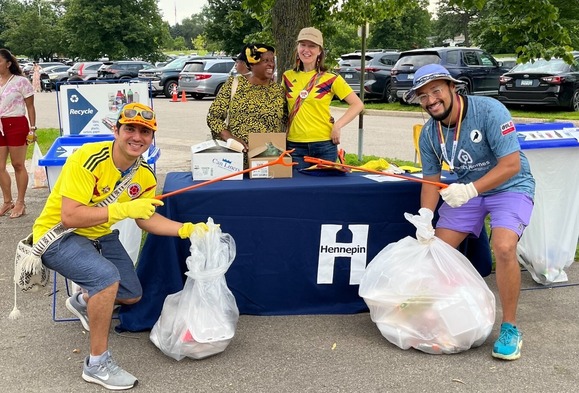 Community zero waste grants provide funding to community-based organizations to develop and lead waste prevention and diversion projects.
Examples of projects could include community-led swaps, repair clinics, special material collections, and recycling or organics drop-off sites that address waste programming gaps or culturally specific needs.
Applicants may apply for up to $100,000 per year for up to 3 years to implement projects that advance the county’s zero-waste goals. There is no minimum grant award. Applications are due on Wednesday, December 4 at 2 p.m.
If you have questions about grants, contact Didier Bolanos Gonzalez at Didier.BolanosGonzalez@hennepin.us.
Installing pollinator garden in fall (left) and rusty-patched bumble bee on red bee balm in summer! (right)
A group of neighbors gathered to harvest native plant seeds one evening this past fall in south Minneapolis. They collected from classic pollinator plants like Purple Coneflowers and Joe Pye Weed, as well as the Foxglove Beardtongue, which in the summer has pretty white tubular flowers.
“They smell like stinky socks,” said Sara Nelson, field botanist and ecologist, as she rubbed their seeds into a little envelope. “It’s better to keep them out of your living room. I found that out the hard way.”
Year-round effort by the neighborhood, for the pollinators
Nelson is a founder of the Corcoran Pollinator Project. What started as a project to create habitat for the endangered rusty-patched bumble bee has grown into a year-round effort.
Native seeds gathered by neighbors in the fall are then sown in outdoor nursery pots. The Minnesota winter provides the cold and wet conditions needed to break the seed coat and allow the plant to germinate. The plants that emerge the following year are either given away to neighbors or are installed in the yards of lucky neighborhood lottery winners, who get a free pollinator garden of their own. It’s a win for everyone, expanding both community connections and bee habitat.
But the biggest win happened this past summer during a pollinator workshop with Zach Portman, a taxonomist at the University of Minnesota Bee Lab. They found six different species of bees, including a rusty-patched bumble bee sitting on a red bee balm plant. A cause for celebration indeed!
Apply for a Hennepin County Good Steward Grant
The Corcoran Pollinator Project received a Hennepin County Good Steward Grant in 2024 to support their community workshops and expand their pollinator plant nursery and garden installations.
Applications for the next round of Good Steward grants will be accepted November 5, 2024, through January 23, 2025.
These grants typically support community-based or single applicant projects, such as constructing rain gardens, stabilizing stream banks and shorelines, restoring native habitat, installing vegetated filter strips, or implementing other best management projects. The typical funding amount is $10,000 to $20,000; maximum funding amount of $25,000.
An online workshop for potential applicants to learn more about the program, the application requirements, and how to submit an application using the Supplier Portal will be held Tuesday, November 14 from 4 to 5:30 p.m. RSVP to receive the Teams meeting invite.
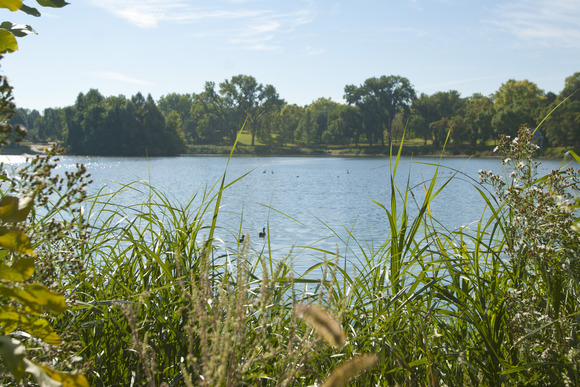 Powderhorn Lake in Minneapolis, which was the location of a project that received funding from the Environment and Natural Resources Trust Fund to evaluate the effectiveness of rain gardens on improving lake water quality in urban areas
For over three decades, the Environment and Natural Resources Trust Fund has provided funding to protect Minnesota’s land, air, water, and wildlife. This includes over $26 million awarded since 2010 to 63 conservation projects in Hennepin County. The positive impacts of these projects include:
- Expanding surveys of native bees and improving collaboration and public outreach on pollinators.
- Facilitating the protection of public and private lands through land acquisition and conservation easement establishment.
- Evaluating the effectiveness of rain gardens on improving the lake water quality in urban areas.
- Helping lay the foundation for the county’s environmental education and youth employment initiatives in partnership with community groups.
This fund is up for a statewide ballot renewal initiative in November that would secure lottery funds for these efforts for another 25 years.
Don’t let your pumpkins go to waste
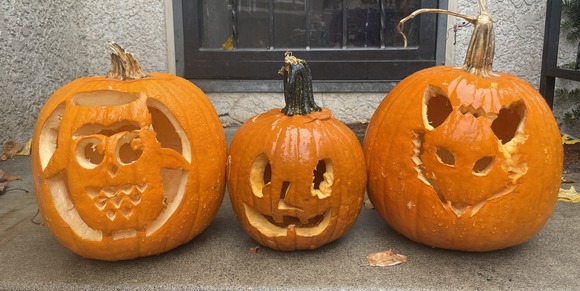 When you clean up from Halloween, don’t let your pumpkins go to waste! Pumpkins are great fuel for compost, and there are many options! Compost pumpkins by adding them to your backyard compost bin, putting them in your organics recycling cart at home or at a drop-off, setting them out for yard waste collection, or bringing them to a yard waste site. You can also leave them out for the birds and squirrels to enjoy.
Some cities are offering special drop-off events:
Yard sign recycling drop off
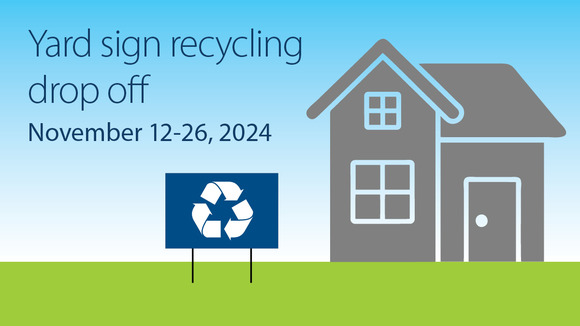 Before dropping yards signs off, contact your campaign to ask if they want the signs back. Drop off for recycling yard signs will be available at four locations from November 12 – 26:
- Hennepin County drop-off facilities in Bloomington (1400 West 96th Street) and Brooklyn Park (8100 Jefferson Highway), open Tuesday to Saturday from 9 a.m. to 5 p.m., proof of residency, such as a driver’s license or utility bill, required
- Minneapolis North Transfer Station (2710 Pacific Street North) Open 24 hours a day, 7 days a week, collection container will be outside of the gate
- Minnetonka/Hopkins Recycling Center (11522 Minnetonka Blvd.), open 24 hours a day, 7 days a week
Thanksgiving holiday hours at the drop-off facilities
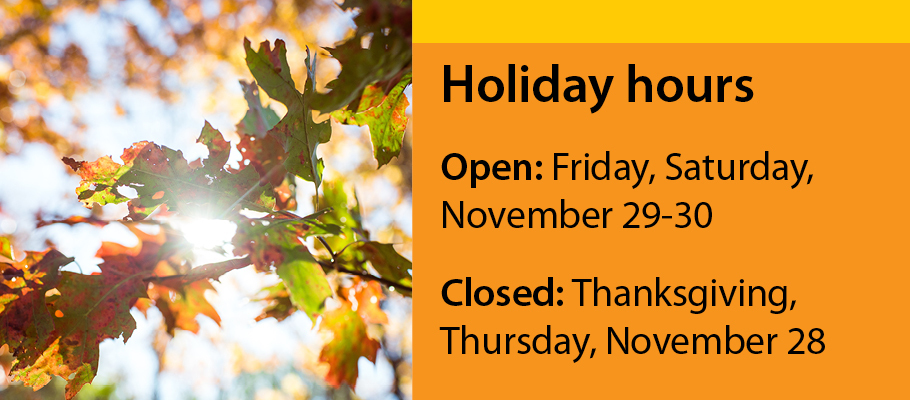 The Hennepin County drop-off facilities in Bloomington and Brooklyn Park will be closed on Thanksgiving, Thursday, November 28. The facilities will be open normal business hours on Friday, November 29 and Saturday, November 30.
Holiday markets and bazaars offering local and reused products
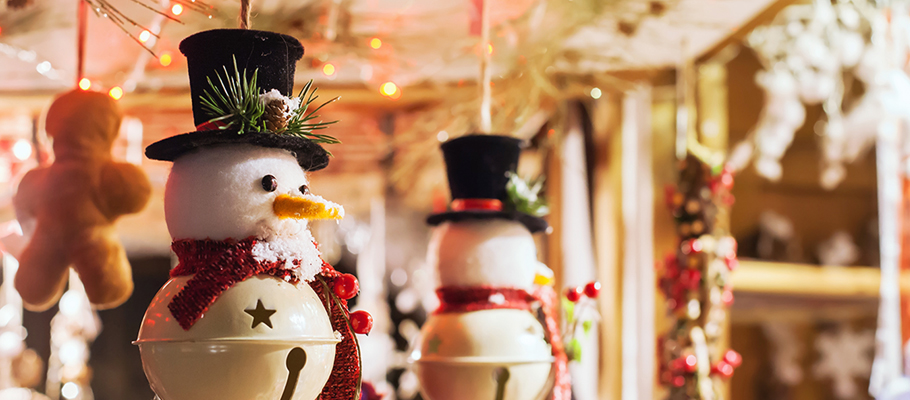 Craft fairs rule the event circuit at the holidays. You need to be a savvy shopper if you’re looking for products that are locally made and/or crafted from reused or recycled materials. Get tips for spotting reuse at fairs and markets and find a list of upcoming markets on Choose to Reuse.
Don’t miss events like the Richfield Fall Boutique on Saturday, November 16, the Minneapolis Makers Market and Bar Hop on Saturday, November 30, and the Nicollet Island Winter Market on Sunday, December 15.
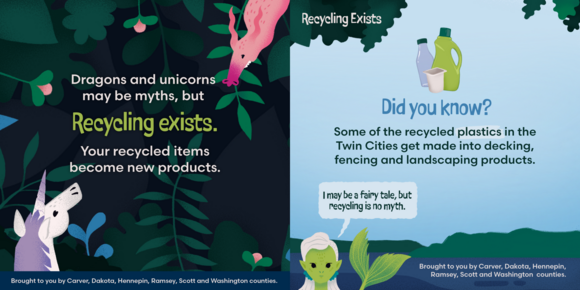 Here in the Twin Cities, recycling is real and it works. The items you put in your cart get recycled when you recycle right. Here are five recycling facts to help you be an informed recycler this America Recycles Day (November 15).
Fact #1: Recycling works!
The cans, bottles, and paper you place into your curbside cart are made into a variety of new products. Minnesota and the Midwest are home to many recycling facilities that collect, sort, process, and manufacture items made from the items we put our recycling bins. Learn what happens to your recycling at RecyclingExists.com
Fact #2: Plastic items get recycled
You can recycle plastic bottles, containers, and jugs numbered 1, 2 and 5. These items are sorted, shredded, melted into pellets and then sold to companies to make new products. Avon Plastics in Paynesville turns milk jugs and detergent bottles into durable decking, fencing and landscaping products, while drink bottles and produce containers get made into new bottles in Wisconsin and Ohio.
Fact #3: Recycling is sorted by people and machines
The items you put in your recycling cart at home are taken to a recycling facility, where the materials are sorted by both people and machines. Trying to recycle an item that is not accepted can damage the machines and harm employees.
See the recycling guide (PDF) for what’s accepted and important items to keep out.
Fact #4: Recycling is a successful industry
About 78,000 jobs in Minnesota are created by the recycling industry. These jobs add about $23.9 billion to Minnesota's economy.
Fact #5: Recycling is important, but not creating waste in the first place is better
The best way to manage waste is to not create it in the first place. Next best is reusing the items you already have. After that, recycling is the best way to manage waste because it gives materials new life and reduces trash.
|